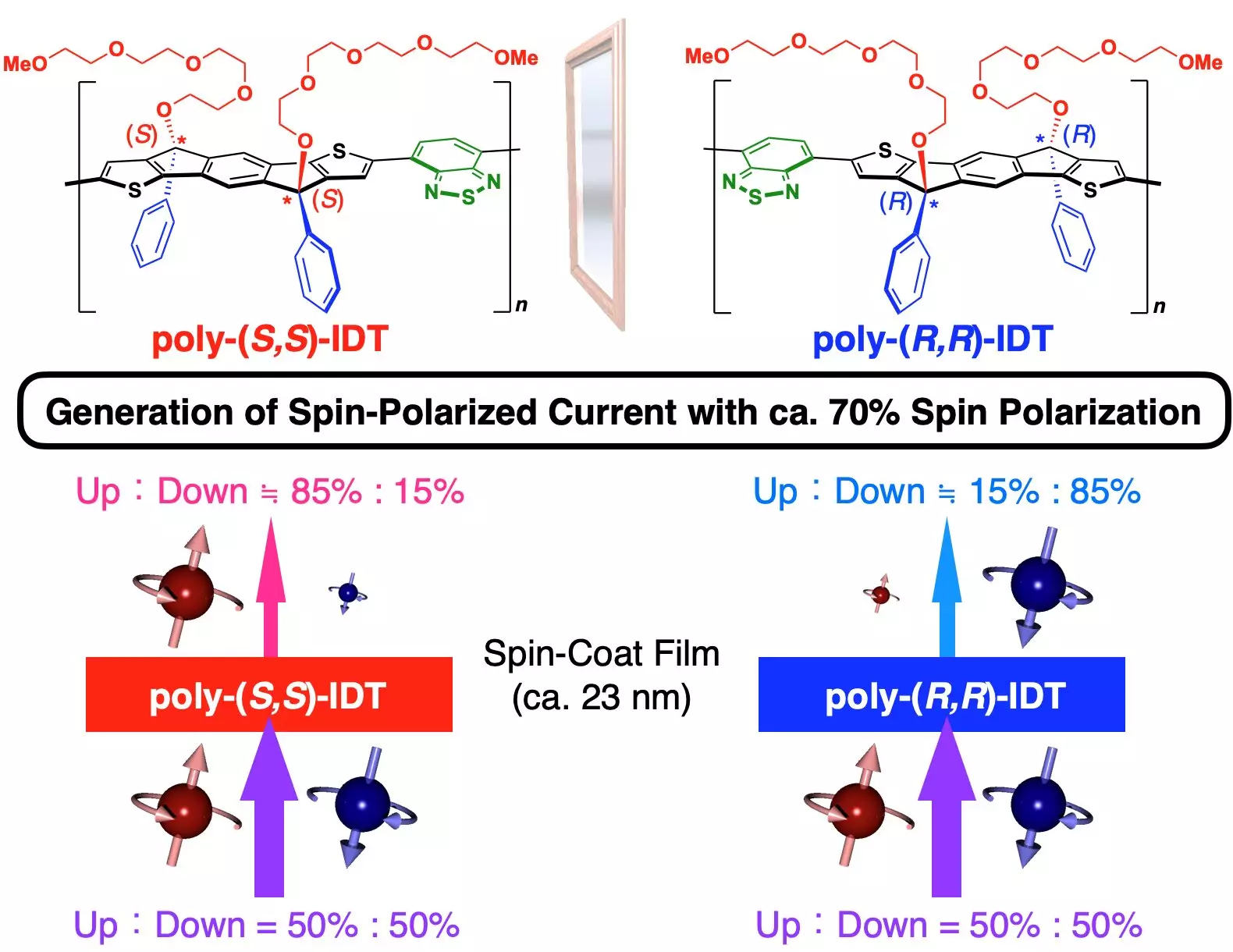Chirality, a distinctive property found in nature, demonstrates how certain molecules exist in two forms that are mirror images of each other, akin to left and right hands. This phenomenon plays a crucial role in various scientific fields, particularly in chemistry and material science. The difference in the spatial arrangement of atoms within chiral molecules can lead to differing interactions with light and electrical currents. Recent advancements have illuminated the importance of chirality in the realm of spintronics, where the spin of electrons—rather than just their charge—is harnessed for innovative electronic applications.
In a groundbreaking study published in Chemical Communications, researchers from Osaka University have explored the synthesis and application of chiral copolymer films, achieving remarkable spin polarization that sets the stage for new spin-filtering technologies. By creating a chiral copolymer composed of indacenodithiophene (IDT) derivatives, the research team has enhanced the films’ chirality while also allowing for practical fabrication through spin-coating techniques. This method significantly simplifies the production of polymer films known for strong spin polarization, a vital characteristic that has historically been challenging to achieve.
The study focuses on chirality-induced spin selectivity (CISS), a phenomenon whereby chiral molecules exhibit differential interaction with polarized currents. This unique interaction leads to the generation of spin-polarized currents, a desirable feature in developing next-generation electronic devices. To quantify the CISS within these newly developed films, researchers employed atomic force microscopy, enabling the precise measurement of spin polarization by manipulating the polarization directions via a magnetic field. Impressively, the IDT copolymer films achieved a spin polarization measurement nearing 70%, placing them among the highest-performing chiral polymers documented in literature.
The implications of these findings extend far beyond academic interest; they beckon exciting possibilities for practical applications in spintronics, a field dedicated to enhancing electronic functionalities through spin manipulation. The IDT copolymer films not only promise to serve as efficient spin filters but also hold potential in crucial sectors such as clean energy technology. As industries increasingly turn towards sustainable practices, harnessing spin-polarized currents could pave the way for more effective energy solutions.
This research from Osaka University marks a significant step forward in materials science, demonstrating that the synthesis of chiral copolymer films can be both innovative and practical. With a simplified production process and impressive spin polarization, these films are positioned to become instrumental in the quest for advanced electronic devices that harness not just electron charge but also spin. As researchers and technologists continue to explore the boundaries of chirality and its applications, the future of spintronics looks increasingly promising, potentially revolutionizing how we utilize electronic materials in everyday applications.

